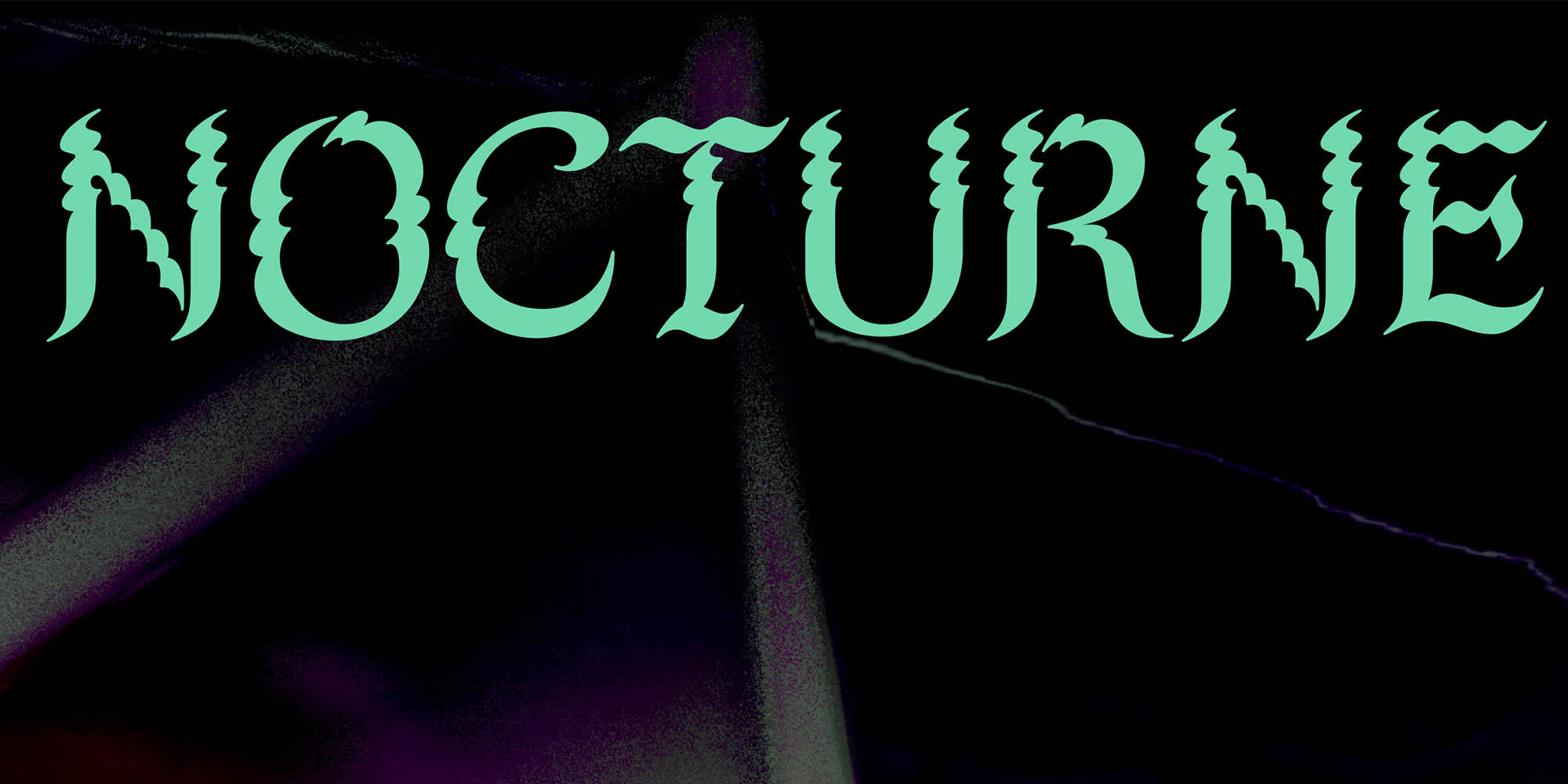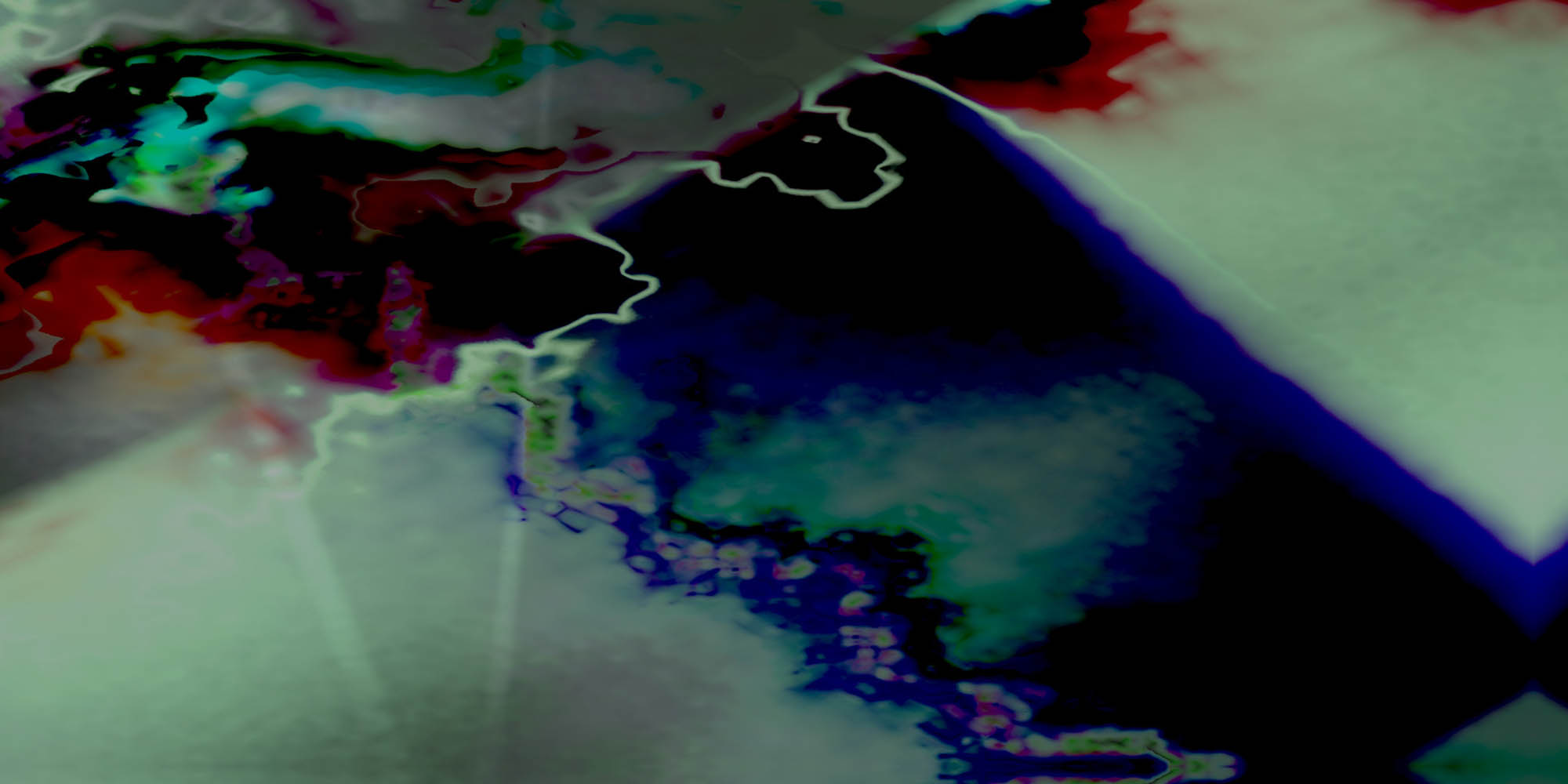A name we are all familiar with. A style of music that we have all heard before. This form of music was particularly played by Frédéric Chopin. The term translates as “nocturnal”, which is easy to recognize in this style of music. Sometimes it plays a cheerful tone, sometimes a somber tone. We are talking about the term nocturne. In this article, we do not mean just any nocturne, but a very special one. Created in a hopeless time, where not only the economy was sinking, but also the joy of life. The Pandemic. Nocturne presents you the ups and downs of the pandemic.
Nocturne is an artwork that recognizes our post-global pandemic world while also acknowledging challenges that lie ahead. It provides the audience with a contemporary artistic interpretation of the current situation and a fresh breath of life in what would otherwise be a bleak outlook, as a large-scale, immersive installation that uses interactive and audio-reactive visuals with emotive-abstraction animation, mapping emotions, and design that integrates the real-time flow of dance performance. This work tries to create a tribute to the ancient rites of spring by appealing to imagery, music, and motion that recalls the past and signal hope for the future.
The Nocturne features a performance by Victoria Primus (AT), music by Tate Egon Chavez (US), with animation and visuals by Mark Chavez (US, SG), and produced by Ina Conradi (SG). We spoke with the four artists to learn interesting facts about their work Nocturne.
How did you come up with the idea of Nocturne? And why did you choose the name Nocturne?
Ina Conradi: The piece began as a form of overcoming challenging circumstances. We suffered two setbacks last year: firstly, our kids and family are separated across three continents due to the pandemic. And secondly: I was diagnosed with cancer. To make sense of the unfathomable, we decided to create a piece that addressed our emotional states like anguish, fear, loneliness, hope, and perseverance. We asked our son Tate Egon based in Los Angeles, to compose an animation we created in Singapore. We invited Vienna-based choreographer and dancer Victoria Primus to perform. She will be a symbol of virtue and fortitude at center stage. This joint collaborative performance kept us busy and healed us; it worked as a cleansing, allowing us to create a Deep Space 8k theater performance that would reunite us. The title is inspired by stages of the night, one’s isolation and solitude where everything is implied.
Tate Chavez: The musical composition process for “Nocturne” was very intuitive. The result is a sample of the trauma that occupied the collective subconscious during the first months of the Covid-19 pandemic. Listening allows this turmoil to emerge to the front of one’s consciousness, prompting awareness, catharsis, and growth. The name “Nocturne” is a nod to the homonymous classical music genre, which was popular in the 19th century. While not a strict nocturne in the classical sense, our “Nocturne” uses similar themes of darkness and the natural world to stage its emotional narrative.
Mark Chavez: As artists, we are always motivated to express our feelings in our work. With Ina and I living away from our family and our children then facing a severe lifethreatening illness, our choices and decisions on our far-flung lifestyle came home to us as a burden. Forcing us to confront our personal isolation and realizing that in this current world, what we are feeling is very much like what other people are experiencing. Recognizing this as a universal human state, we wished to share this with the Ars Electronica community and express this in the artwork “Nocturne.”



What was or is your goal behind this project?
Ina Conradi: The goal of Nocturne is to capture the sense of transience and impermanence inherent in life and in this time of change. To face those things in life in an intimate and personal way, such as severe illness and death, can be seen as complicated and even terrifying.
Victoria Primus: The goal behind this project for me as a dancer and choreographer is to embody abstract topics such as life and death circles, various forms of realities, realms, and universes. The collaboration with the outstanding artists of this project stands in the foreground. It is of utter importance for me to dive into the cosmos they have created in terms of visual and musical genius to add an additional layer of expertise, the expressive dance genre.
Nocturne has the power to capture me fully. It feels like I am possessed by the universe, which has been created. During my solo performance, I am controlled by external forces of light and sound. I am guided by an alien creature, which helps me to fight and win a battle. I am involved with myself and the environment.
Studying movement qualities, I take inspiration from the microcosm of bacteria and viruses. The process of losing and gaining control over oneself’s body and mind, in the hope of finding meaning in a world of contradictions, resonates within my work.
Tate Chavez: “Nocturne” provides a space for the listener to connect with parts of their intuition which they may otherwise subdue in their day-to-day. These emotions and impulses are not always pleasant, but they need to be acknowledged and worked through to find their eventual resolution.
Mark Chavez: This piece is made as an expression of hope illuminating a vision of despair and gloom. The imagery is created around the notion of a dream-world of abstraction featuring the human grace of physical motion.
Some people have lost loved ones during the pandemic. In which way will your artwork affect them?
Ina Conradi: The project evokes depths of our own and shared post-pandemic anguish. We hope to provide comfort and motivation to look for reasons to have hope, overcome illness, existential woes, and the untimely deaths of loved ones.
Tate Chavez: In general, I find the music harrowing. Even the moments with the strings feel like nails on chalk to me in their rigidity and synthetic-ness. When I make this kind of music, it’s a very stream-of-consciousness type of process. As a result, the piece ends up revealing a lot of things I would not usually confront. I think that’s why it’s so difficult for me to listen to emotionally. I say this to emphasize that this is just my reaction; I welcome any interpretations and hope that listeners will empathize with it in their own ways.
To those who have lost someone close to them, my sincere condolences, I would be deeply affected to learn that this project has helped someone in any way, but I make no attempt to occupy any space in another’s grief with this work.
You can enjoy Nocturne on September 11 and 12 as part of the Deep Space 8K festival program.
Ina’s new media explorations redefine painting as unframed, animated and spatial, expanding into co-immersive spaces. Her most recent work is in experimental art/sci animation, inspired by Southeast Asian cultural archetypes, describing the fundamental questions raised by Quantum Theory about the very nature of reality. Ina is currently Associate Professor at the Nanyang Technological University Singapore.
Composer and multi-instrumentalist Tate Egon Chavez explores the intimacy of unconventional sounds with his compositions for new media and film. During and since the completion of his undergraduate studies in music at UC Berkeley, his soundscapes have featured in festivals internationally. As an independent recording artist, Chavez’s music explores issues of identity in the context of an increasingly multi-cultural world.
Victoria is a mother, dancer and choreographer based in Vienna, collaborating internationally. The physical approach to abstract themes is at the centre of her movement experiments, in which the conglomerate of art and science is the driving force. She juxtaposes order and chaos by breaking through fixed choreographies through surprising improvisation. She holds a BA ( Hons ) in Theatre Dance from the University of London Arts, UK.
Mark is an animation industry veteran and educator with a record of award-winning feature films and interactive titles. His artistic practice utilizes digital multimedia techniques to tag visual meaning to tangible, recognizable ideas. He explores computer animation and emotive-abstraction. His current work shapes a design sense of a live, anthropomorphic world view to a contemporary scientific view.
